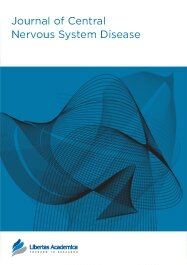

Publication Date: 17 Jul 2009
Type: Case Report
Journal: Journal of Central Nervous System Disease

Tetsuya Goto1, Takahiro Miyahara1, Kazutaka Toyoda3, Jun Okamoto2, Yukinari Kakizawa1, Jun-ichi Koyama1, Masakatsu G. Fujie2 and Kazuhiro Hongo1
1Department of Neurosurgery, Shinshu University School of Medicine, Matsumoto, Japan. 2Faculty of Science and Engineering, Waseda University, Tokyo, Japan. 3Graduate School of Science and Engineering, Waseda University, Tokyo, Japan.
Abstract
Object: Robotic surgery can be applied as a novel technology. Our master-slave microscopic-micromanipulator system (NeuRobot), which has a rigid endoscope and three robot-arms, has been developed to perform neurosurgical procedures, and employed successfully in some clinical cases. Although the master and slave parts of NeuRobot are directly connected by wire, it is possible to separate each part and to apply it to telesurgery with some modifications. To evaluate feasibility of NeuRobot in telesurgery, some basic experiments were performed.
Methods: The quality of telemedicine network system between Shinshu University and one of the affiliated hospitals, which was completely separated from other public network systems, was investigated. The communication delay was calculated from the transmitting and the receiving records in the computers set in each hospital. The relationship between the change in communication delay from the master part to the slave part of NeuRobot (0, 100, 300, 500 and 700 ms) respectively and feasibility of NeuRobot was investigated. The task performance time in each time changing group was compared. Feasibility of NeuRobot in telesurgical usage was evaluated. The master part and the slave part of NeuRobot placed in each hospital were connected through private network system. Interhospitally connected NeuRobot was compared with directly connected one in terms of task performance time.
Results: Less than 1 ms was required for corresponding the data in a steady transmitting state. Within 2 seconds after connection, relative time delay (maximum 40 ms) and packet loss were sometimes observed. The mean task performance time was significantly longer in over 500 ms delayed group compared with directly connected NeuRobot. There was no significant difference in the task performance time between directly connected NeuRobot and interhospitally connected NeuRobot.
Conclusion: Our results proved that telesurgical usage of NeuRobot was feasible. Telesurgical usage of telecontrolled manipulator system is recommended for application in a private network system in order to reduce technical and ethical problems. Some technical innovations will bring breakthrough to the telemedicine field.
PDF (4.09 MB PDF FORMAT)
RIS citation (ENDNOTE, REFERENCE MANAGER, PROCITE, REFWORKS)
BibTex citation (BIBDESK, LATEX)
This is my first experience working with the journal and it has been the easiest publication process that I can imagine. The links sent make login simple. The revisions are made so quickly. The decisions are made rapidly. We will definitely be working with this journal again.

All authors are surveyed after their articles are published. Authors are asked to rate their experience in a variety of areas, and their responses help us to monitor our performance. Presented here are their responses in some key areas. No 'poor' or 'very poor' responses were received; these are represented in the 'other' category.See Our Results
Copyright © 2013 Libertas Academica Ltd (except open access articles and accompanying metadata and supplementary files.)
FacebookGoogle+Twitter
PinterestTumblrYouTube